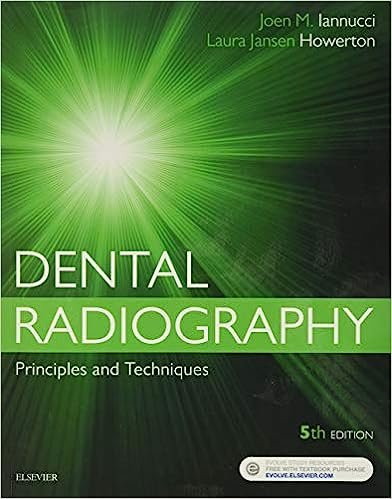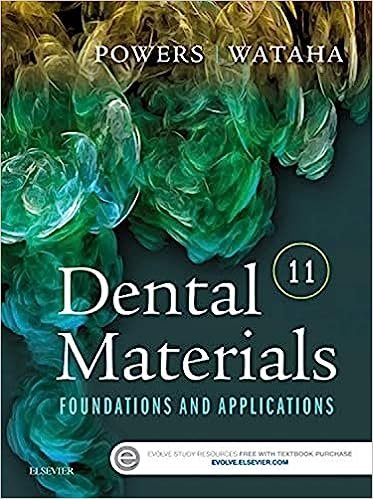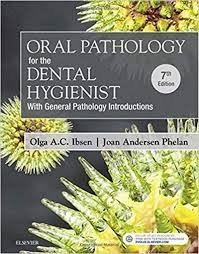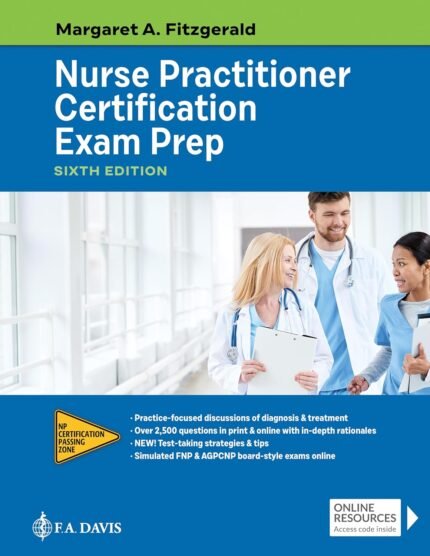Test Bank for Dental Instruments 6th Edition by Boyd
Chapter 06: Burs and Rotary Attachments for Handpieces
Boyd: Dental Instruments, 6th Edition
MULTIPLE CHOICE
- Which of the following are parts of a bur?
| a. | Head |
| b. | Neck |
| c. | Shank |
| d. | All of the above |
ANS: D
The head, neck, and shank are all parts of a bur.
REF: Page 117 TOP: CDA, GC, II. Chairside Dental Procedures
- Which part of the bur cuts, polishes, or finishes?
| a. | Shank |
| b. | Neck |
| c. | Head |
ANS: C
The head of the bur is the working end that cuts, polishes, or finishes. The shank is the part of the bur that is inserted into the handpiece. The neck of the bur connects the shank to the head and is tapered.
REF: Page 117 TOP: CDA, GC, II. Chairside Dental Procedures
- A bur with a latch at the end of the shank fits into which type of handpiece?
| a. | High-speed |
| b. | High-speed fiberoptic |
| c. | Slow-speed straight |
| d. | Slow-speed contra-angle |
ANS: D
A bur with a latch at the end of the shank fits into a slow-speed handpiece. A bur with a straight, long shank fits into a slow-speed handpiece also. A friction grip bur fits into a high-speed handpieces.
REF: Page 117 TOP: CDA, GC, II. Chairside Dental Procedures
- A bur with a straight and long shank fits into which type of handpiece?
| a. | High-speed |
| b. | High-speed fiberoptic |
| c. | Slow-speed straight |
| d. | Slow-speed contra-angle |
ANS: C
A bur with a straight, long shank fits into a slow-speed handpiece. A bur with a latch at the end of the shank also fits into a slow-speed handpiece. A friction grip bur fits into a high-speed handpieces.
REF: Page 117 TOP: CDA, GC, II. Chairside Dental Procedures
- A friction grip bur fits into which type of handpiece?
| a. | High-speed |
| b. | High-speed fiberoptic |
| c. | Slow-speed straight |
| d. | Slow-speed contra-angle |
ANS: A
A friction grip bur fits into a high-speed handpiece. A bur with a straight, long shank or a latch at the end of the shank fits into a slow-speed handpiece.
REF: Page 117 TOP: CDA, GC, II. Chairside Dental Procedures
- Which part of the bur that fits into the handpiece?
| a. | Head |
| b. | Neck |
| c. | Shank |
ANS: C
The shank is the part of the bur that is inserted into the handpiece. The head of the bur is the working end that cuts, polishes, or finishes. The neck of the bur connects the shank to the head and is tapered.
REF: Page 117 TOP: CDA, GC, II. Chairside Dental Procedures
- Which type of bur is used to remove decay deep in the walls of the preparation once the tooth has been opened?
| a. | Round bur |
| b. | Inverted cone |
| c. | Straight fissure—plain cut |
| d. | Straight fissure—crosscut |
| e. | Tapered fissure—crosscut |
ANS: A
A round bur is used for caries removal. An inverted cone and straight and fissured burs are used to refine the cavity preparation once the caries have been removed.
REF: Page 121 TOP: CDA, GC, II. Chairside Dental Procedures
- Which type of bur is used to open a tooth for an endodontic treatment?
| a. | Round bur |
| b. | Inverted cone |
| c. | Straight fissure—plain cut |
| d. | Straight fissure—crosscut |
| e. | Tapered fissure—crosscut |
ANS: A
A round bur usually is selected to open a tooth for endodontic treatment. An inverted cone, tapered fissure bur, finishing bur, and diamond flat-end taper are used to refine the cavity preparation once the caries have been removed.
REF: Page 121 TOP: CDA, GC, II. Chairside Dental Procedures
- The dentist needs a No. 4 bur for a procedure. Which bur would you choose?
| a. | Straight fissure—plain cut |
| b. | Straight fissure—crosscut |
| c. | Inverted cone |
| d. | Diamond bur |
| e. | Round bur |
ANS: E
No. 4 is a round bur. Straight fissure––plain cut burs are numbered 56, 57, 58; straight fissure––crosscut: 556, 557, 558; inverted cone: 33 1/2, 34, 35, 36, 37, 39; diamond burs do not have numbers.
REF: Page 121 TOP: CDA, GC, II. Chairside Dental Procedures
- The dental procedure requires a No. 37 bur for the tray setup. Which bur would you select?
| a. | Round bur |
| b. | Inverted cone |
| c. | Pear-shaped bur |
| d. | Straight fissure—plain cut |
| e. | Tapered fissure—crosscut |
ANS: B
No. 37 is an inverted cone bur. Round burs are numbered 1/4 to 10; tapered fissure––crosscut: 699, 700, 701, 702, 703; straight fissure––plain cut: 56, 57, 58; pear-shaped: 330, 331, 332, 333.
REF: Page 125 TOP: CDA, GC, II. Chairside Dental Procedures
- Which of the following would you select if the dentist requested a No. 330 bur?
| a. | Round bur |
| b. | Inverted cone |
| c. | Pear-shaped bur |
| d. | Straight fissure—crosscut |
| e. | Tapered fissure—crosscut |
ANS: C
No. 330 is a pear-shaped bur. Round burs are numbered 1/4 to 10; inverted cone burs are numbered 33 1/2, 34, 37, 39; straight fissure––crosscut: 556, 557, 558; tapered fissure––crosscut 699, 700, 701, 702,7 03.
REF: Page 123 TOP: CDA, GC, II. Chairside Dental Procedures
- Which type of bur is a No. 57?
| a. | Round bur |
| b. | Inverted cone |
| c. | Straight fissure—plain cut |
| d. | Tapered fissure—plain cut |
| e. | Straight fissure—crosscut |
ANS: C
No. 57 is a straight fissure––plain cut bur. Round burs are numbered 1/4 to 10; inverted cone: 33 1/2, 34, 37, 39; straight fissure––plain cut: 56, 57, 58; tapered fissure––plain cut: 168, 169, 170, 171.
REF: Page 127 TOP: CDA, GC, II. Chairside Dental Procedures
- Which of the following numbers designates a straight fissure—plain cut bur?
| a. | 6 |
| b. | 56 |
| c. | 330 |
| d. | 557 |
| e. | 701 |
ANS: B
Straight fissure––plain cut burs are numbered 56, 57, 58. Round burs are numbered 1/4 to 10; straight fissure––crosscut: 556, 557, 558; tapered fissure––crosscut: 699, 700, 701, 702, 703; pear shaped: 330, 331, 332, 333.
REF: Page 127 TOP: CDA, GC, II. Chairside Dental Procedures
- If a tray setup requires a No. 168 bur, which type of bur would you select?
| a. | Round bur |
| b. | Inverted cone |
| c. | Straight fissure—crosscut |
| d. | Tapered fissure—plain cut |
| e. | Tapered fissure—crosscut |
ANS: D
Tapered fissure––plain cut burs are numbered 168, 169, 170, 171; round burs are numbered 1/4 to 10; inverted cone burs: 33 1/2, 34, 37, 39; straight fissure––crosscut: 556, 557, 558; tapered fissure––crosscut: 699, 700, 701, 702, 703.
REF: Page 129 TOP: CDA, GC, II. Chairside Dental Procedures
- Which of the following is a tapered fissure—plain cut bur?
| a. | 8 |
| b. | 57 |
| c. | 168 |
| d. | 699 |
ANS: C
The 168 is a taper fissure plain while the 699 is a tapered fissure crosscut. The 57 is a straight fissure bur, pain cut, parallel sides that forms retention grooves but not angles in the walls of cavity preparations. The 8 is a round bur used for caries removal.
REF: Page 129 TOP: CDA, GC, II. Chairside Dental Procedures











Reviews
There are no reviews yet.